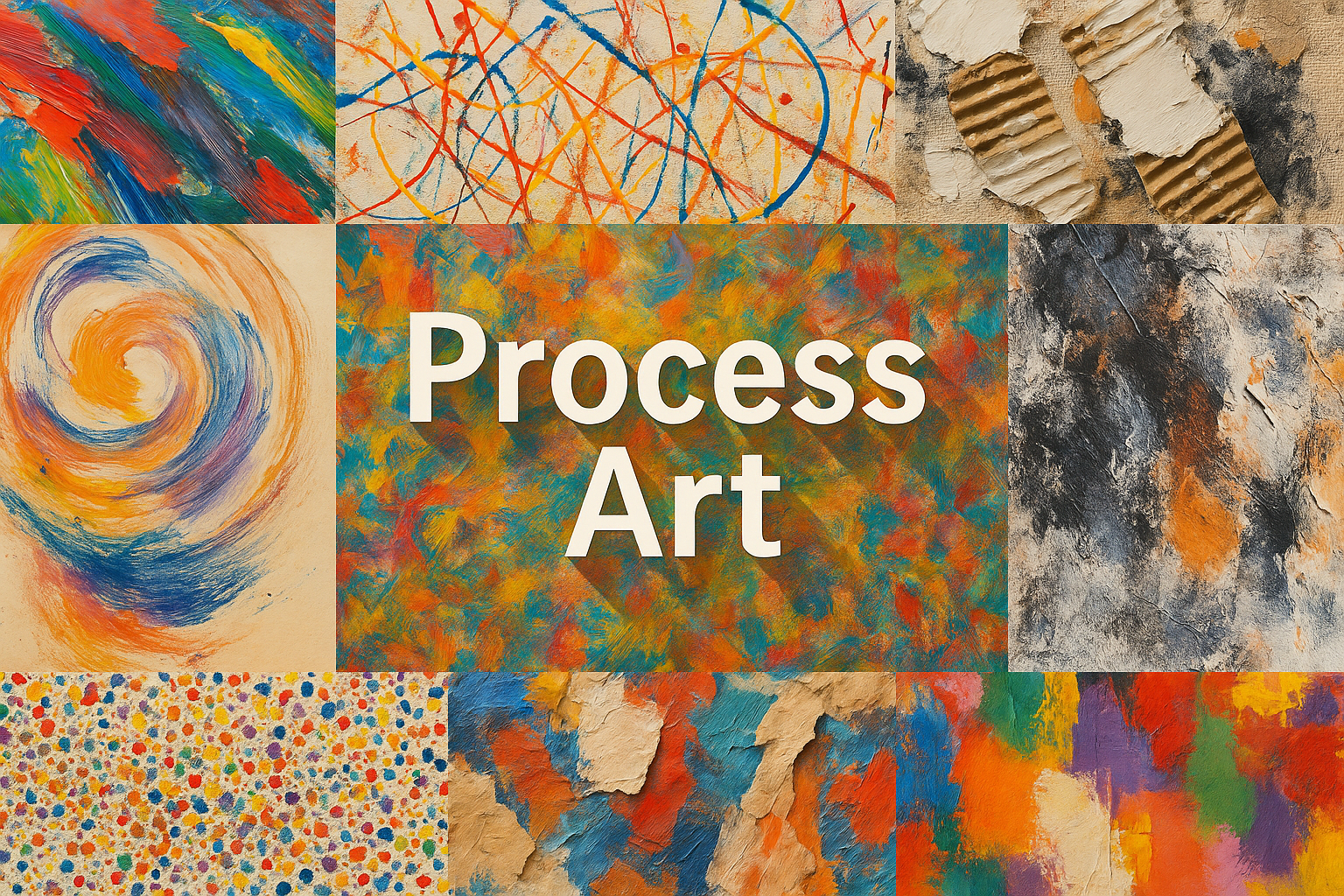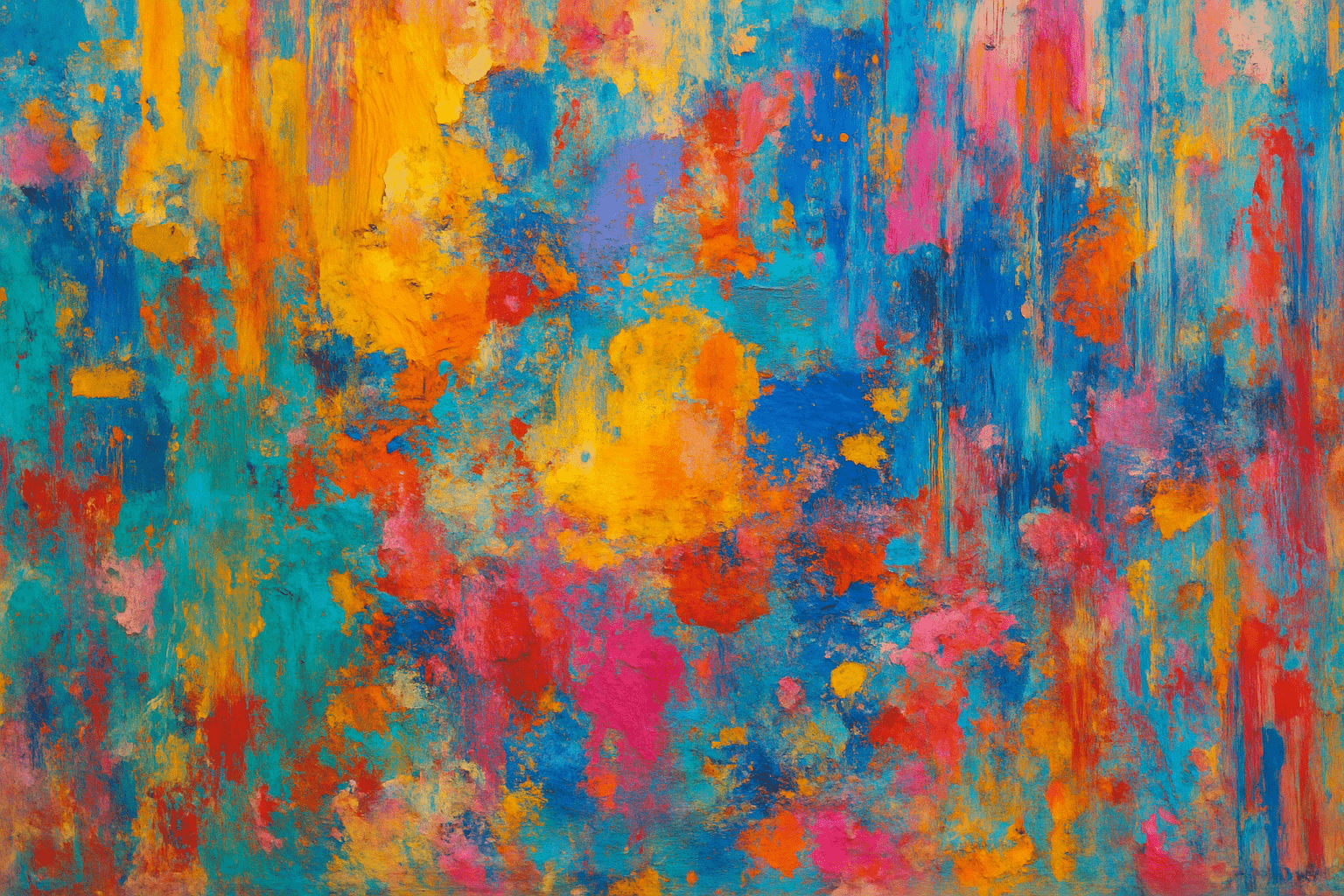
Process art
Process art is a type of art that is focused on the process of making the art, rather than the final product. This type of art is often experimental and can involve a variety of different mediums and techniques.
AOI thinking about Process art [+_~]-/
Overview and Quickfacts
Process art is an artistic style in which the artist emphasizes the process of creating the work, rather than the final product. This type of art often involves using nontraditional materials and techniques, and is often collaborative. The focus on the process of creating art, rather than the final product, allows for a more open-ended and experimental approach.
Can understand it also, as:
1. Kinetic art
2. Op art
3. Action painting
4. Process painting
5. Installation art
6. Performance art
7. Land art
8. Body art
9. Environmental art
10. Video art
Categorize it as:
Impressionism, Modernism
.: Dreaming :.
holds a HAIKU for the art style
:. Thought is power .:
Detailed Description
Process art is an artistic style in which the artist emphasizes the process of creating the work, rather than the final product. This type of art often includes elements of chance and improvisation, and is often open-ended and experimental. Process art can be traced back to the Dada and Surrealist movements of the early 20th century, which were both heavily influenced by chance and the subconscious mind. In the 1950s and 1960s, artists such as Jackson Pollock and Robert Rauschenberg began to experiment with process-based art, using techniques such as dripping, pouring, and collage. These artists were part of the Abstract Expressionist movement, which placed a strong emphasis on the individual artist’s process of creation. Today, process art is still a popular and influential artistic style. Many contemporary artists make use of chance and improvisation in their work, and the style has been particularly influential in the development of installation art and performance art. Process art can be found in the work of artists such as Damien Hirst, Tracey Emin, and Bruce Nauman.
.. beep, beep, beep ..
<START OF TRANSMISSION>
1. Process art is an artistic practice in which the process of making art is more important than the final product. 2. Process art is often associated with the movements of Abstract Expressionism and Action painting. 3. Process art is sometimes referred to as an "anti-art" movement. 4. Process art is often seen as a reaction against the traditional values of art, which emphasize the importance of the final product. 5. Process art is often seen as a way of making art more democratic, since the emphasis is on the process rather than the final product. 6. Process art is often associated with the use of non-traditional materials and techniques. 7. Process art is often seen as a way of making art more accessible, since the emphasis is on the process rather than the final product. 8. Process art is often seen as a way of making art more personal, since the emphasis is on the process rather than the final product. 9. Process art is often seen as a way of making art more expressive, since the emphasis is on the process rather than the final product. 10. Process art is often seen as a way of making art more spontaneous, since the emphasis is on the process rather than the final product. 11. Process art is often seen as a way of making art more experimental, since the emphasis is on the process rather than the final product. 12. Process art is often seen as a way of making art more intuitive, since the emphasis is on the process rather than the final product. 13. Process art is often seen as a way of making art more playful, since the emphasis is on the process rather than the final product. 14. Process art is often seen as a way of making art more open-ended, since the emphasis is on the process rather than the final product. 15. Process art is often seen as a way of making art more collaborative, since the emphasis is on the process rather than the final product. 16. Process art is often seen as a way of making art more accessible to people with different abilities, since the emphasis is on the process rather than the final product. 17. Process art is often seen as a way of making art more environmentally friendly, since the emphasis is on the process rather than the final product. 18. Process art is often seen as a way of making art more economical, since the emphasis is on the process rather than the final product. 19. Process art is often seen as a way of making art more time-efficient, since the emphasis is on the process rather than the final product. 20. Process art is often seen as a way of making art more flexible, since the emphasis is on the process rather than the final product.
<EOF>
.. robbel bob
Visual Examples from our image gallery
Coming soon, we are so slow .. might never come
Artists, Paintings, and more
(be aware, can be highly speculative)
Artists (be aware, speculation possible):
1. Jackson Pollock (1912-1956) 2. Mark Rothko (1903-1970) 3. Clyfford Still (1904-1980) 4. Barnett Newman (1905-1970) 5. Adolph Gottlieb (1903-1974) 6. Helen Frankenthaler (1928-2011) 7. Robert Motherwell (1915-1991) 8. Richard Diebenkorn (1922-1993) 9. Joan Mitchell (1925-1992) 10. Clyfford Still (1904-1980) 11. Franz Kline (1910-1962) 12. Willem de Kooning (1904-1997) 13. Arshile Gorky (1904-1948) 14. Philip Guston (1913-1980) 15. Hans Hofmann (1880-1966) 16. Barnett Newman (1905-1970) 17. Adolph Gottlieb (1903-1974) 18. Mark Rothko (1903-1970) 19. Jackson Pollock (1912-1956) 20. Robert Motherwell (1915-1991) 21. Richard Diebenkorn (1922-1993) 22. Joan Mitchell (1925-1992) 23. Helen Frankenthaler (1928-2011) 24. Franz Kline (1910-1962) 25. Willem de Kooning (1904-1997) 26. Arshile Gorky (1904-1948) 27. Philip Guston (1913-1980) 28. Hans Hofmann (1880-1966) 29. Barnett Newman (1905-1970) 30. Adolph Gottlieb (1903-1974)
Artworks (be aware, speculation possible)
1. “Procession of the Virgin” by Unknown, c. 1500 2. “The Procession to Calvary” by Pieter Bruegel the Elder, 1564 3. “The Procession of the Magi” by Giotto, c. 1305 4. “The Adoration of the Magi” by Leonardo da Vinci, 1481 5. “The Annunciation” by Leonardo da Vinci, 1472-1475 6. “The Baptism of Christ” by Leonardo da Vinci, 1472-1475 7. “The Last Supper” by Leonardo da Vinci, 1495-1498 8. “The Virgin of the Rocks” by Leonardo da Vinci, c. 1483-1486 9. “The Mona Lisa” by Leonardo da Vinci, c. 1503-1506 10. “The Creation of Adam” by Michelangelo, 1511 11. “The Fall of Adam and Eve” by Michelangelo, 1511 12. “The Deluge” by Michelangelo, 1512 13. “The Flood” by Michelangelo, 1513 14. “The Sacrifice of Isaac” by Caravaggio, 1603 15. “The Calling of Saint Matthew” by Caravaggio, 1600 16. “The Martyrdom of Saint Matthew” by Caravaggio, 1600 17. “The Entombment of Christ” by Caravaggio, 1603 18. “The Conversion of Saint Paul” by Caravaggio, 1601 19. “The Crucifixion of Saint Peter” by Caravaggio, 1601 20. “The Death of the Virgin” by Caravaggio, 1606 21. “The Supper at Emmaus” by Caravaggio, 1601 22. “Nativity with Saint Francis and Saint Lawrence” by Caravaggio, 1609 23. “The Adoration of the Shepherds” by Caravaggio, 1609 24. “The Adoration of the Kings” by Caravaggio, 1609 25. “The Adoration of the Magi” by Caravaggio, 1603 26. “The Annunciation” by Caravaggio, 1608 27. “The Ascension of Christ” by Caravaggio, 1608-1609 28. “The Assumption of the Virgin” by Caravaggio, 1608-1609 29. “The Crowning of the Virgin” by Caravaggio, 1608-1609 30. “The Death of the Virgin” by Caravaggio, 1606
Epoch
Process art is a style of art that emphasizes the process of creating the art over the final product. This style of art emerged in the mid-20th century as a reaction to the traditional focus on the final product in art.
AI ART RESSOURCES (AKA, well Tools)
Helping tools -> predefined search links on other pages:











